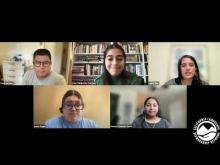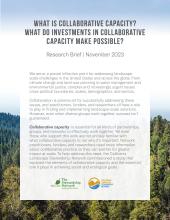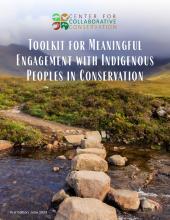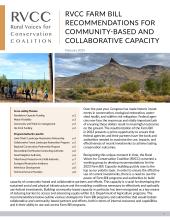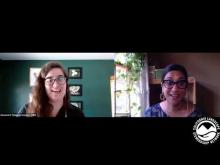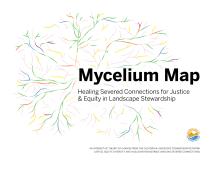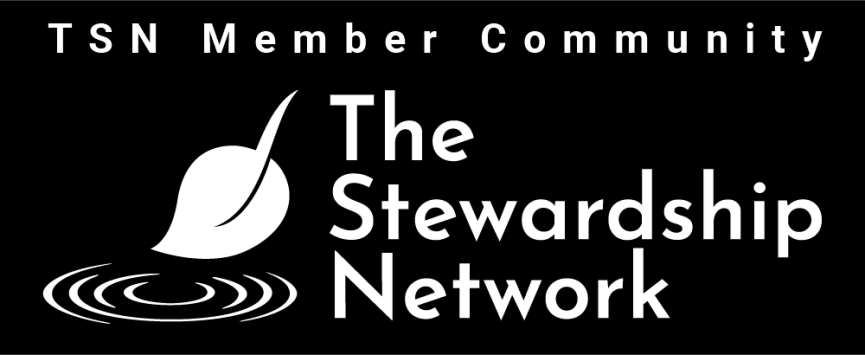Collaborative stewardship is both an art and a science. Get the tools you need to work better together here.
2025
Introduces a data-driven model showing how investing in collaborative capacity strengthens performance, trust, and impact—demonstrating that well-resourced collaboratives drive lasting, systemic change.
- Details
Collaborative approaches are often applied to today’s most complex challenges and emergent opportunities. This is certainly true for the field of landscape stewardship, the practice of conserving, restoring, and stewarding landscapes and seascapes at scale. Those working in this field recognize the value of collaboration, and while pressing questions persist, the discussion has shifted. Rather than question the value of collaboration, it is more likely to be about why and how to invest in collaborative models. The purpose of this article is to contribute to the larger conversation by introducing the Collaborative Capacity Impact Model™, a data-driven framework based on an interdependent, scalable system of 15 impacts and the process of scaling up, accelerating, and sustaining those impacts. The concept of collaboratives as a special type of organizational model is discussed, along with five key collaborative design elements.
California Landscape Stewardship Network, August 2023
- Details
On August 10, 2023, we were joined by four rising leaders in California to continue highlighting efforts statewide that center equity, justice, Tribal sovereignty, and inclusion in the stewardship of land, water, and communities:
- Barbara Camacho Garcia, Grassroots Ecology
- Benjamin Chang, California Climate Action Corps
- Ivette Torres, The People's Collective for Environmental Justice
- Irene Takako Farr, Better World Group
This series is hosted by the CLSN’s Justice, Equity, Diversity, & Inclusion Roundtable for Healing Severed Connections. This lunchtime conversation was moderated by JEDI Roundtable member Laurel Wee.
November 2023
Explores how collaborative capacity enables diverse groups to address landscape-scale challenges like climate change and water management effectively.
- Details
-
We are at a pivotal inflection point for addressing landscape scale challenges in the United States and across the globe. From climate change and land-use planning to water management and environmental justice, complex and increasingly urgent issues cross political boundaries, scales, demographics, and sectors. Collaboration is paramount for successfully addressing these issues, and practitioners, funders, and researchers all have a role to play in finding and implementing landscape-scale solutions. However, even when diverse groups work together, success isn’t guaranteed.
Collaborative capacity is essential for all kinds of partnerships, groups, and networks to effectively work together. Yet even those who support this work are not entirely familiar with what collaborative capacity is, nor why it’s important. Network practitioners, funders, and researchers need more information about collaborative practice so they can partner for greater impact at scale. To help address this need, the California Landscape Stewardship Network commissioned a study that explored the elements of collaborative capacity and the essential role it plays in achieving social and ecological goals.
November 2023
Explores how investing in collaborative capacity strengthens conservation outcomes and fills governance gaps through inclusive action.
- Details
-
Collaborative conservation and stewardship offer effective approaches for addressing complex challenges such as climate change, biodiversity loss, and environmental justice. They also provide innovative ways to fill governance gaps and make inclusive decisions in situations for which we have no sufficient structure, processes, or abilities. However, in order to effectively allocate scarce resources, we need to better understand how to invest in the “collaborative capacity” that sustains collaborative groups, partnerships, and networks.
This study provides an analysis of what collaborative capacity is and how it leads to improved conservation and stewardship outcomes based on expert perspectives gathered from in-depth interviews and focus groups with practitioners, leaders, and funders across the United States.
We present a framework that illustrates the collaborative capacity elements that are necessary and fundable, as well as a list of activities they enable. We share the reasons why consistent, long-term investment in these elements is needed. We emphasize the contextual factors that affect collaboration so that these investments are made in the right places, at the right times, and in the right ways to achieve their potential. We end with a set of recommendations directed toward practitioners, funders, and researchers that will help align their efforts, making them more effective, efficient, and able to achieve durable outcomes.
Center for Collaborative Conservation, January 2023
Offers a roadmap for conservation practitioners to support Indigenous-led solutions and uphold sovereignty in decision-making.
- Details
There is an increasing need for recognizing Indigenous sovereignty when defining successful conservation outcomes. Even when conservation focuses on a “do no harm” approach towards Indigenous Peoples and communities, the contributions, perspectives, and resulting benefits are often not taken into consideration, thereby increasing social and environmental inequities. When those affected by environmental decisions are excluded from the decision-making process, opportunities to collaboratively solve problems in new, innovative, and empowering ways are limited. To help fill this gap, in this Toolkit we seek to build a roadmap where conservation practitioners can support solutions which are driven by community expertise and needs.
Rural Voices for Conservation Coalition, February 2023
Proposes capacity-building reforms to empower community-based conservation through 2023 Farm Bill programs and authorities.
- Details
-
The reauthorization of the Farm Bill in 2023 presents a prime opportunity to ensure that federal agencies and their partners have the tools and authorities needed to maximize the use, impacts, and effectiveness of recent investments to achieve lasting conservation outcomes.
Recognizing this unique moment in time, the Rural Voices for Conservation Coalition (RVCC) convened a working group to develop recommendations for the 2023 Farm Bill. Capacity-building quickly rose to the top as our priority topic. In order to ensure the effective use of current investments, there is a need to use the power of Farm Bill programs and authorities to build capacity of community-based and collaborative partners and efforts. This capacity is crucial for developing the sustained social and physical infrastructure and the enabling conditions necessary to effectively and optimally use federal investments. Building community-based capacity in particular has been recognized as a key means of reducing barriers to access and advancing equity within U.S. Department of Agriculture programs. The recommendations below outline various strategies for Farm Bill programs and authorities that would bolster collaborative and community-based partners and efforts, both in terms of internal resources and capabilities and in their ability to use and access Farm Bill programs.
International Land Conservation Network, May 2023
- Details
-
Indigenous cultures have stewarded nature for thousands of years but today's conservation approaches often sideline this knowledge – to the detriment of stewardship efforts, Indigenous peoples and the planet. In the first of a 2-part webinar series, we hear from speakers from the U.S. and Australia about the dynamics of successful partnerships between conservation organizations and Indigenous groups, both in the management of conservation lands and in Indigenous handbacks of conservation lands. The key focus is on the ‘how’: How to partner with and support Indigenous-led conservation, including best practices, strategies for reciprocity, and turning listening into action.
North American Intergovernmental Committee On Cooperation For Wilderness and Protected Areas Conservation, 2022
Integrating Indigenous knowledge into land management strengthens conservation, ecosystem survival, and human-nature connections.
- Details
-
In recent years, the limitations of land-management decisions based predominantly on Western knowledge have become apparent. By adopting a more holistic perspective, we can improve our understanding of the interconnected forces that shape ecology throughout North America and expand our tools and approaches for land and resource conservation. Incorporating and implementing the demonstrated knowledge of Indigenous peoples can prove crucial for the survival of some of our most critically threatened ecosystems and species, the sustainable use of our cherished protected areas and the surrounding landscapes and seascapes, and for the revitalization of human health and connections to nature.
California Landscape Stewardship Network, June 2022
- Details
-
On June 29, 2022, the CLSN continued its Equity Leaders Speaker Series with a visit from Geneva E.B. Thompson, Assistant Secretary for Tribal Affairs.
California Landscape Stewardship Network, June 2022
Explores relationships and disconnections in stewardship networks to support equity and systemic healing.
- Details
-
The Mycelium Map was first created for the Stewardship.2021 Spring Forum – a convening of the California Landscape Stewardship Network – to bring Justice, Equity, Diversity, and Inclusion (JEDI) principles into all scales of participation in the Spring Forum, from the individual, organizational, network, and beyond. Going beyond that point in time, the co-creators intend for the Mycelium Map to drive conversation, lead action, and increase connectivity across our field of practice, from regional, state, national, and international levels.



